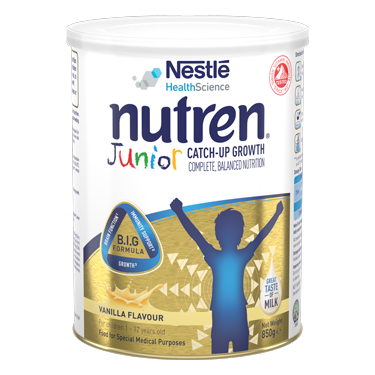Growth Delay
Keeping your child healthy and free from malnutrition is related to your child’s growth. Growth requires a constant source of building blocks and energy to keep the process going. When there is a significant shortage of energy, or any of these building blocks, the process is hindered, resulting in developmental delay and stunting.
In order for children to reach their full potential, providing complete and balanced nutrition is essential. In children with feeding or eating difficulties, or those who are very ill, nutritional support may be required to help ensure that their nutritional needs are met.
A dietary component frequently used in balanced nutritional plans is whey protein.1 Whey is a high quality protein derived from milk. It is rapidly digested and absorbed and contains essential amino acids that the body cannot produce and therefore needs to obtain from the diet.
Also important for growing children is docosahexanoic acid, or DHA, a type of fatty acid that has been shown to have beneficial effects on brain function. 2,3
Adding probiotics or prebiotics to children’s diets have been shown to provide potential benefits in preventing infections and allergies.4-6 Probiotics are helpful bacteria commonly added to food, beverages, or dietary supplements, and are thought to promote healthy digestive and immune systems. Prebiotics, on the other hand, nondigestible dietary ingredients that contribute to the growth of a healthy gut bacteria.
Clearly, nutritional plans for children should be carefully considered. Apart from the usual components of food, one must look for other important elements, such as essential amino acids, DHA and probiotics and prebiotics. A complete and balanced diet helps ensure that they receive their nutritional needs for optimum growth and development.
- Marshall K. Altern Med Rev. 2004;9:136-156.
- Horrocks LA, Yeo YK. Pharmacol Res. 1999;40:211-225.
- Kuratko CN, Barrett EC, Nelson EB, Salem N, Jr. Nutrients. 2013;5:2777-2810.
- Thomas DW, Greer FR. Pediatrics. 2010;126:1217-1231.
- Gruber C, van Stuijvenberg M, Mosca F, et al. J Allergy Clin Immunol. 2010;126:791-797.
- Lohner S, Kullenberg D, Antes G, Decsi T, Meerpohl JJ. Nutr Rev. 2014;72:523-531.

